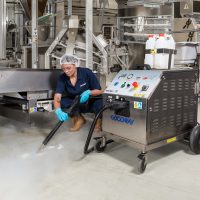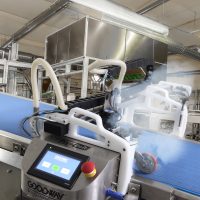Protecting patients from contamination is one of the duties of healthcare facilities. When companies provide in-patient services, this extends to how patients’ food might be present or be subject to risks. After all, unsafe food can have significant health consequences even for perfectly healthy people. Add the potential for patients to be vulnerable due to compromised immune systems or periods of recovery, and the need to be particularly vigilant is clear.
While some measures will be similar to most food service environments, others need to be more specific to the healthcare space. Professionals and managers need to account for the risks and challenges these spaces feature. We’re going to explore this concept a little further.
The Connection Between Food Safety and Quality Care
In healthcare settings, it’s easy to think of food service as a different sphere entirely from clinical care. Yet, the two aren’t mutually exclusive. Food is an important part of patient well-being. It provides nutrition and can aid in recovery from illnesses and surgeries. Importantly, when contamination occurs, there can be detrimental health impacts.
Therefore, it’s vital for those providing food service in these settings to understand the connection to and be actively involved in prioritizing quality healthcare1 above all else. By definition, quality healthcare is dependent on ensuring ongoing patient safety, centered on the patient’s needs, and timely, among other factors. There are simple steps service providers can take to enhance quality, including involving patients more in their care and offering a human touch. Additionally, your approach to minimizing food contamination can enhance quality standards.
- Ensure communication between care providers and food services: Care providers will have the best understanding of patient needs and the circumstances within the facility. Therefore, they can provide food service staff with information regarding specific patient needs. This isn’t just about what foods are most nutritional, but also what contamination challenges may be present.
For instance, some patients may have specific dietary requirements related to the treatment they’re receiving. Cancer patients navigating chemotherapy are likely to have compromised immune systems, making consuming inadequately rinsed fruits or vegetables even riskier. Good communication of these specific risks enables food staff to take the most relevant additional steps.
- Provide avenues for feedback between patients and food services: Patients may have their own preferences or concerns about the potential for their food to become contaminated in the medical space. There should be clear avenues for them to offer feedback to service providers, either through direct messaging or to delivery staff. Food service managers should then interact with patients either to provide solutions or to reassure them with details of cleanliness methods.
Another way to bolster the connection between quality care and preventing food contamination is to involve food service staff in key facility meetings. Even if it’s just food service managers or supervisors, this allows the department to better understand the current challenges and risks in the facility and how these impact patient needs.
Separation of Food and Waste
Perhaps the most obvious contamination risk for food in healthcare settings is biomedical waste. This waste can be present throughout most facilities and may include everything from bodily fluids to used gloves and other products. Minimizing the potential for this waste to come in contact with foodstuffs is one of the keys to maintaining patient well-being throughout their time in the facility.
Adhering to occupational health and safety (OSHA) waste disposal guidelines2 is a vital component of anti-contamination practices, not to mention in keeping facilities and staff OSHA compliant. These include:
a) Correct segregation
Biowaste must always be stored separately from other forms of waste. For instance, if patients with diabetes receive insulin injections, the used sharps and pharmaceuticals must be disposed of away from both food consumption areas and regular waste. This prevents cross-contamination when staff and patients are handling kitchen and food products.
Color coding waste containers is also an OSHA requirement, further minimizing the potential for workers to mistake which containers to handle. Wherever possible, though, it’s wise to store biowaste and food waste in separate areas. This provides an additional layer of security by minimizing food staff’s unnecessary access to hazardous materials.
b) Clear labeling
It’s important for everyone interacting with both food and biomedical waste to have knowledge of what they may be exposing patients and themselves to. After all, food services staff may be bringing patients’ or workers’ food to various areas of the facility. They need to be able to immediately see and understand what risky materials are present, so they can make informed decisions. Labeling on sample containers, trash units, and other items must be designed for easy reading. This starts with prominent biohazard symbols. Detailing in bold lettering the type of waste and what it contains is also wise. Food staff can then steer clear of these items and not place foodstuffs in the immediate vicinity of what could be wasted.
c) Inspections and Training
Knowledge is a powerful tool in the fight against food contamination risks in healthcare settings. Having a good understanding of the cleanliness gaps and risks empowers managers to make improvements. Additionally, having well-educated workers on hand with the knowledge and skills to respond to risks minimizes the potential for contamination arising. Therefore, inspection and training protocols must be a priority.
Inspections
While the facility might have clear procedures outlined in documentation, you can’t always assume these are always being followed to the letter. Not to mention that unexpected circumstances may arise to impact how procedures are carried out. Therefore, conducting regular inspections is essential. Some points to focus on include:
- Patient eating spaces: Even the space between the plate and mouth can have the potential for contamination to occur. It is vital to ensure that there are regular inspections to ensure staff are implementing cleanliness measures for tables and bedsides before patients are served food. This may include disinfecting surfaces and ensuring any biohazardous materials are removed.
- Food preparation areas: The spaces where food is being prepared can be points for contamination to occur. Foodborne pathogens, such as E.coli can be easily transmitted3, but you can minimize this through careful and clean preparation. Similarly, patients who have food allergies must have their meals prepared in spaces that minimize exposure to ingredients that are hazardous to their health. As a result, regular inspections of food preparation areas, including the processes for wiping surfaces and ingredient separation, is vital.
- Routes between kitchens and wards: Another element to regularly inspect is the route food service staff take when delivering meals to patients. Areas of focus might include the human and biomedical hazards in each area they pass through. Reviewing how food is covered and protected throughout these journeys to minimize accidental contamination or unauthorized access and tampering.

Training
All staff that directly interact with patients’ food need to receive training on measures to minimize contamination. Head nurses4 are usually responsible for providing care staff with guidance on correct waste management, which should include keeping such items clear from patients’ meals. Facility catering managers must also ensure all food service staff receive certified courses and on-the-job guidance that address contamination in their roles.
Chefs and sous chefs need to recognize how cooking times and washing can minimize foodborne contaminants. Delivery staff must be able to identify hazards along the route to patients and protect foodstuffs accordingly. Training also needs to be reviewed for relevance and updated regularly.
References:
Roy Shaw (2022) How to Prioritize Quality Healthcare, from https://www.protrainings.com/blog/prioritize-quality-healthcare/
Abby Witt (2023) OSHA Biohazard Waste Disposal Guidelines, from https://www.medicalwastepros.com/blog/osha-biohazard-waste-disposal-guidelines/
Susan Assanasen, MD, Gonzalo M.L. Bearman, MD, MPHH (2018) Food: Considerations for Hospital Infection Control, from https://isid.org/guide/infectionprevention/hospital-food/
K.K. Padmanabhan and Debabrata Barik 2018) Health Hazards of Medical Waste and its Disposal, from https://www.ncbi.nlm.nih.gov/pmc/articles/PMC7152398/


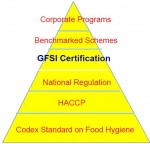
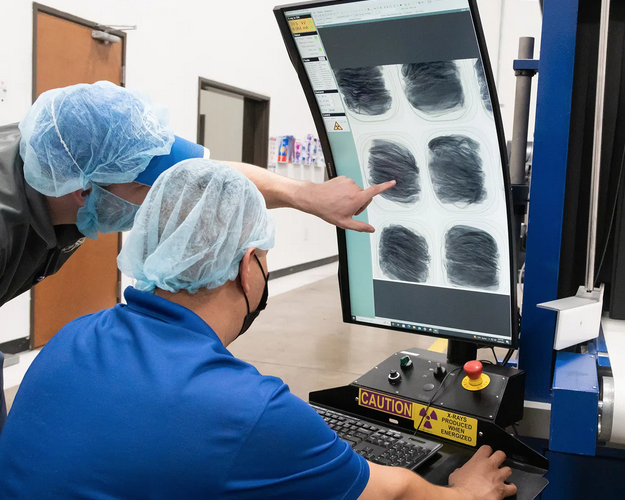
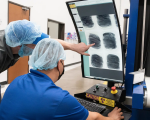








 Nutritionists can either be licensed or unlicensed, depending on their specific career goals and where they live, as licensure requirements can differ from one state to the next. When working with patients one-on-one out of a private practice, for example, a nutritionist might not need to be certified. However, if working with a hospital, a school, or a government organization, it is likely that they will be required to have a license — but again, this can depend on the specific requirements of the state they are working in.
Nutritionists can either be licensed or unlicensed, depending on their specific career goals and where they live, as licensure requirements can differ from one state to the next. When working with patients one-on-one out of a private practice, for example, a nutritionist might not need to be certified. However, if working with a hospital, a school, or a government organization, it is likely that they will be required to have a license — but again, this can depend on the specific requirements of the state they are working in.